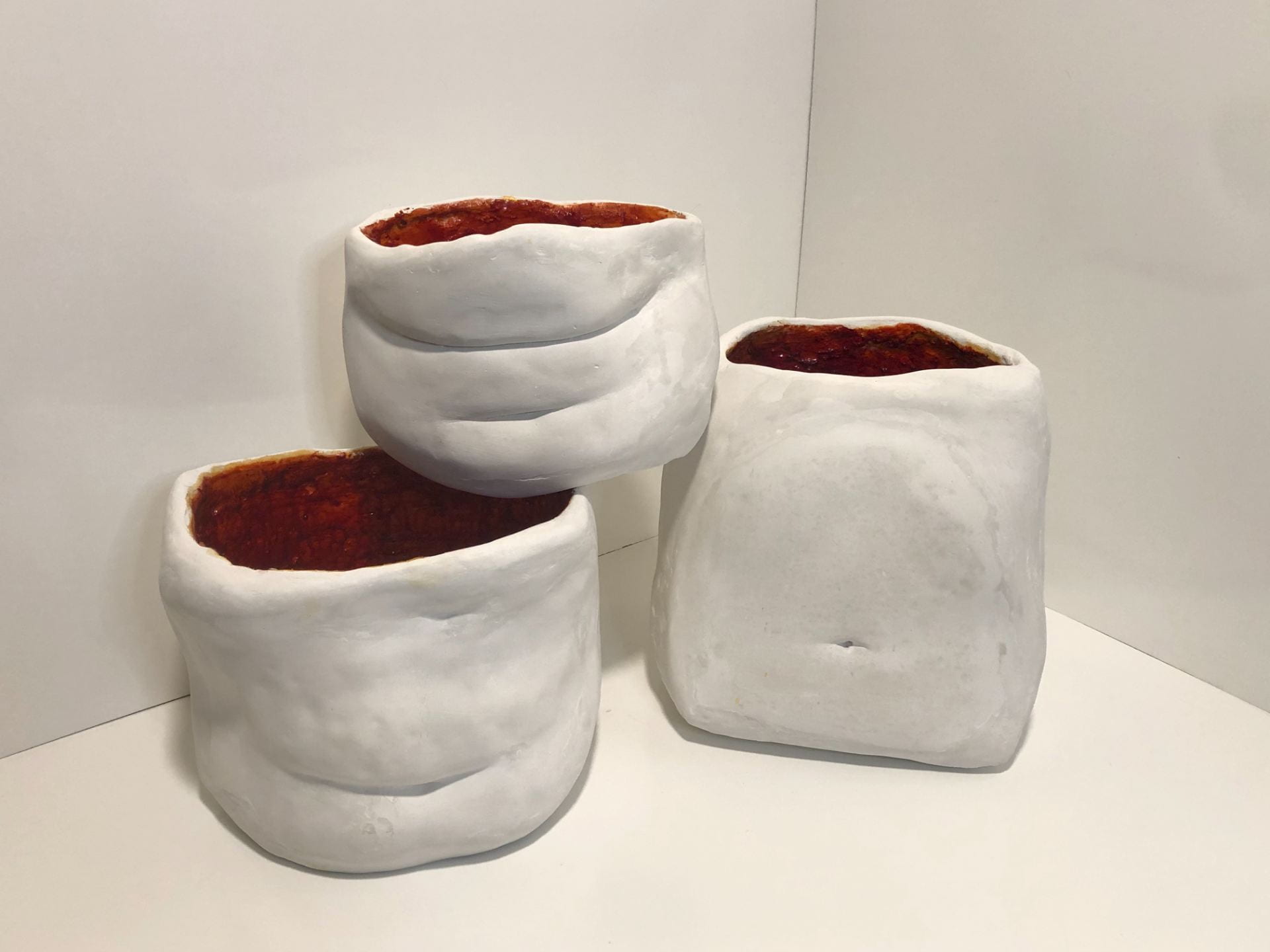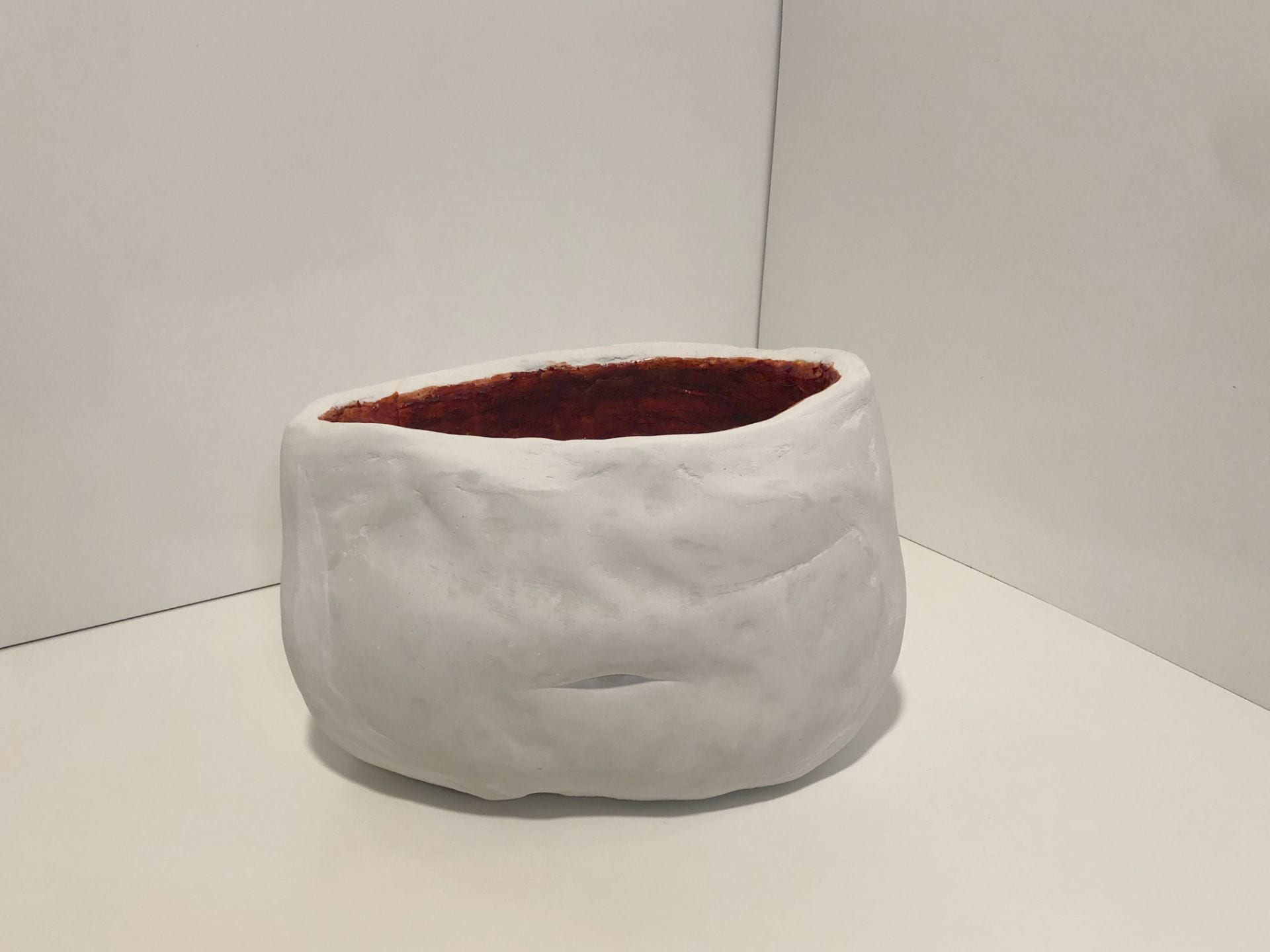This series of stomach-vessels carries the traumas associated with physical appearance. When I was 18, I was diagnosed with Polycystic ovarian syndrome, a syndrome that typically causes an excess production of hormones, leading to imbalances in the body and inducing stress and weight gain. After being diagnosed in 2016, I changed my lifestyle by becoming vegetarian and adopting a spiritual mindset. I am now healthier, but I am left with flabby loose skin around my stomach and weight challenges, the physical signs of my journey, reminders of the mental trauma I have faced.
While working on this project I encountered a lot of questions in conversations with friends and family, especially in light of society’s unrealistic beauty standards. Many people feel ashamed or embarrassed by their bodies, but I want this series to normalize the beauty of imperfections, because carrying the weight of this emotional baggage negatively impacts our lives.
In Grands Ventres (Big Bellies) from 1968, Alina Szapocznikow depicts two large bellies stacked on top of each other, standing five feet tall. The confrontational realism of this work, as well as its direct correlation to her own body and life experience, allowed me to reflect on my own experience. The power of her work lies in the representation of her own body as a fragmented form. I found her work particularly thought-provoking and emotional.
My stomach-vessels respond to a common human condition — we vary in size and shape. But in my experience these differences are often not acceptable. I want society to celebrate differences rather than punish them. And as an artist I want to share in their beauty.





